Abstract
OBJECTIVE: To examine the impact of managed care on the employment and compensation of primary care and specialty physicians, as measured by changes in income, physician-to-population ratios, and specialty choices. METHODS: The authors used data from the American Medical Association's Socioeconomic Monitoring System survey, a nationally representative 1% random survey of post-residency patient-care physicians, and location data from the AMA Masterfile to evaluate the relationship between the growth in managed care from 1985 to 1993 and (a) inflation-adjusted physician incomes and (b) physician-to-population ratios for primary care physicians and specialists. They also used data from the National Residency Matching Program for 1989 through 1995 to look at trends in available positions and specialty choices. RESULTS: Primary care incomes grew 4.78% annually ($33,526 cumulatively) in states with the highest managed care growth, compared to 1.20% ($7448 cumulatively) in the lowest quartile of managed care growth. The difference in income growth for medical and surgical subspecialists between the highest and lowest quartiles was not statistically significant. The incomes of radiologists, anesthesiologists, and pathologists (RAPs) rose 0.14%, or $1700, in the highest quartile versus 4.14% ($58,558) in the lowest. Subspecialists per capita did not differ by quartile of managed care growth; but RAPs per capita increased fastest in states in the lowest quartile. Between 1989 and 1995, the number of family practice and pediatric residency positions that were filled rose 32%, while the number filled remained stable for medical and surgical subspecialists and the number of RAP positions filled fell 14%. CONCLUSIONS: The growth in managed care has been associated with significant changes in physician incomes and practice locations. Between 1985 and 1993, states with the fastest growth in managed care penetration saw the highest rate of growth in primary care physicians' income and the slowest rate of growth in RAP physicians' income. At the same time, the number of RAP physicians grew most rapidly in those states with the lowest rate of managed care growth. Finally, between 1989 and 1995, there was a dramatic increase in the number of primary care residency positions filled and a marked decrease in the number of RAP residency positions filled across the country.
Full text
PDF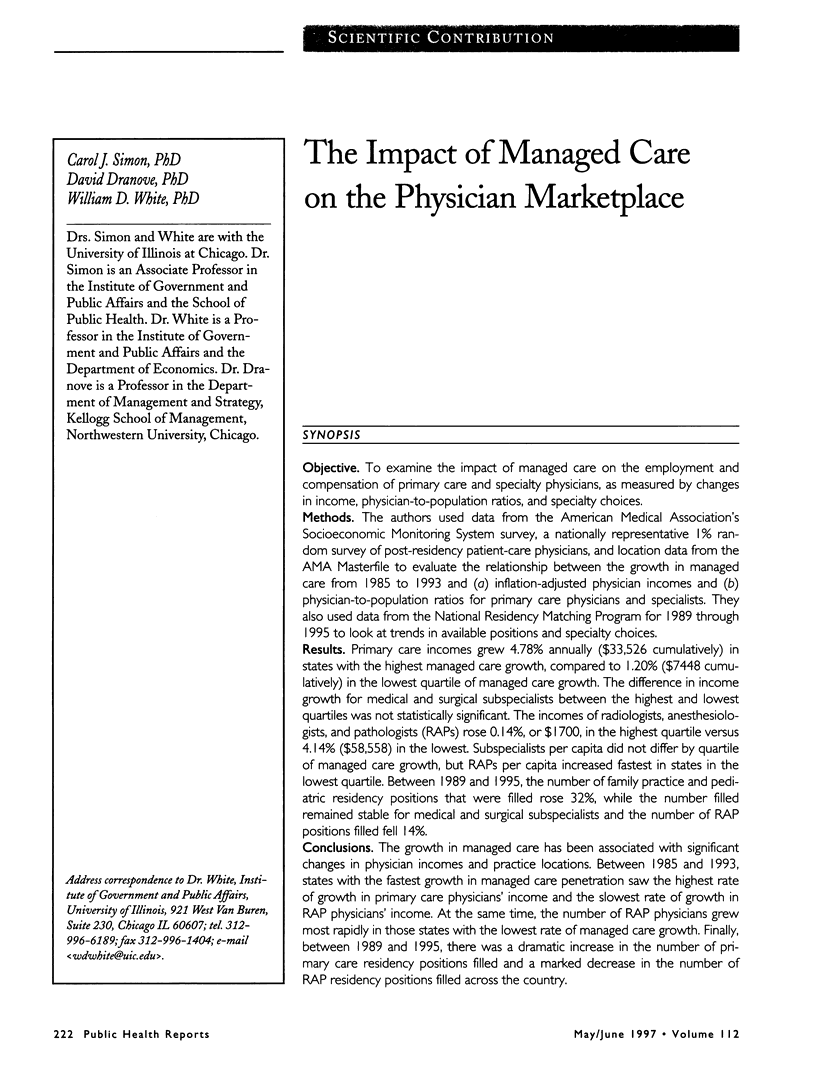
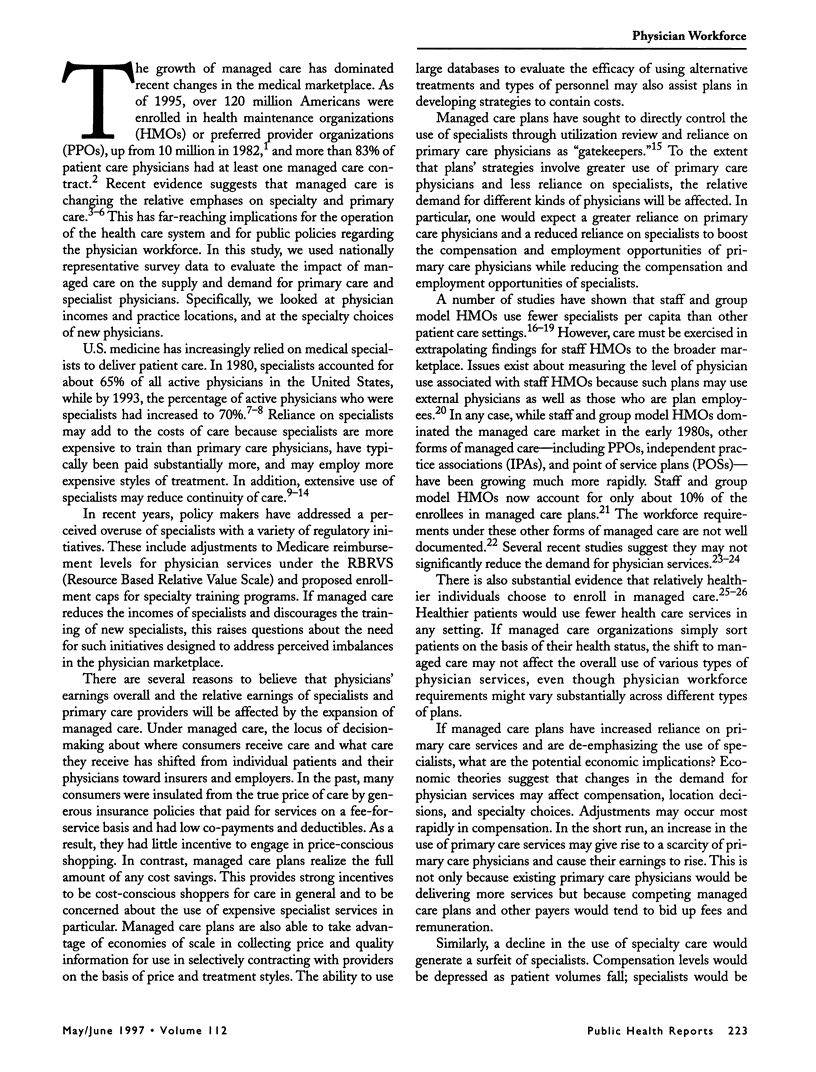
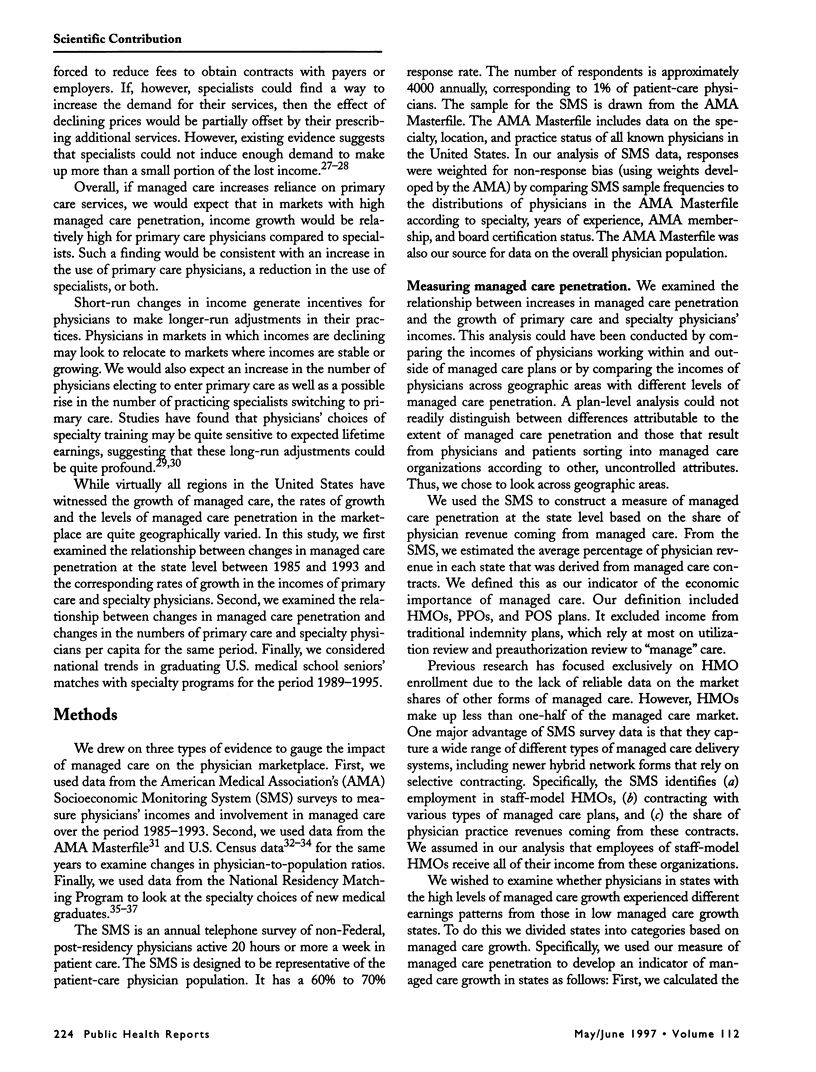
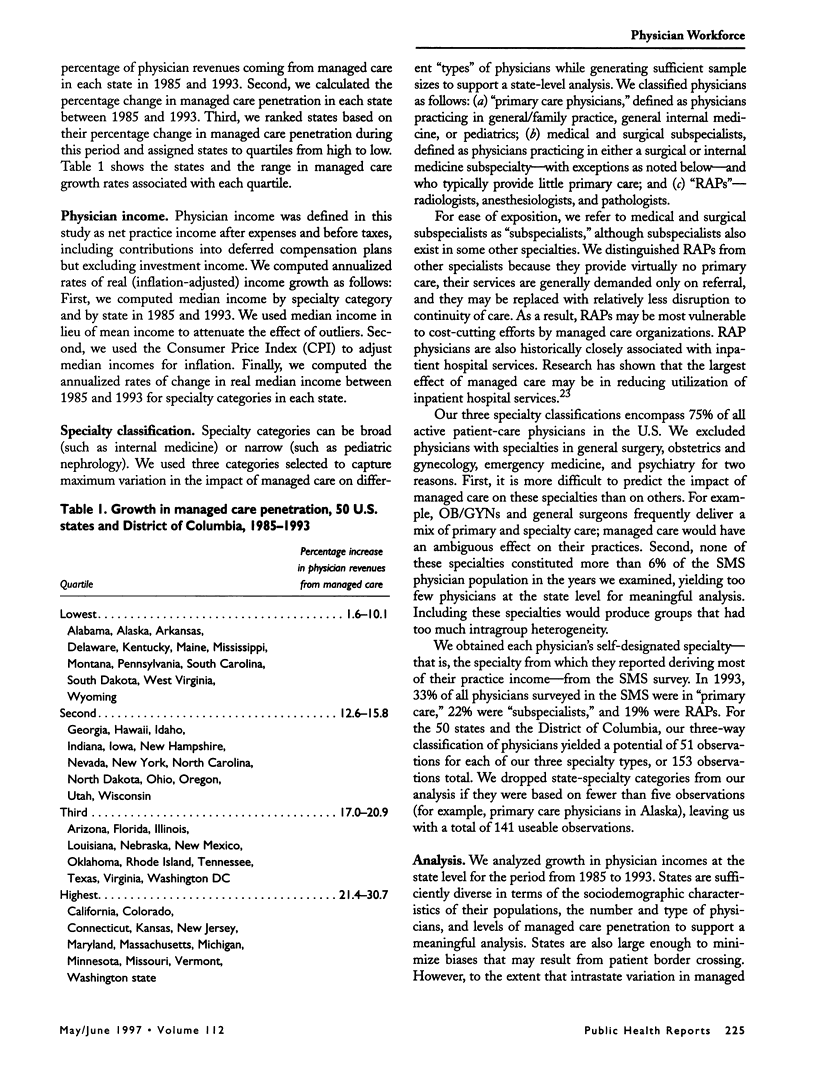
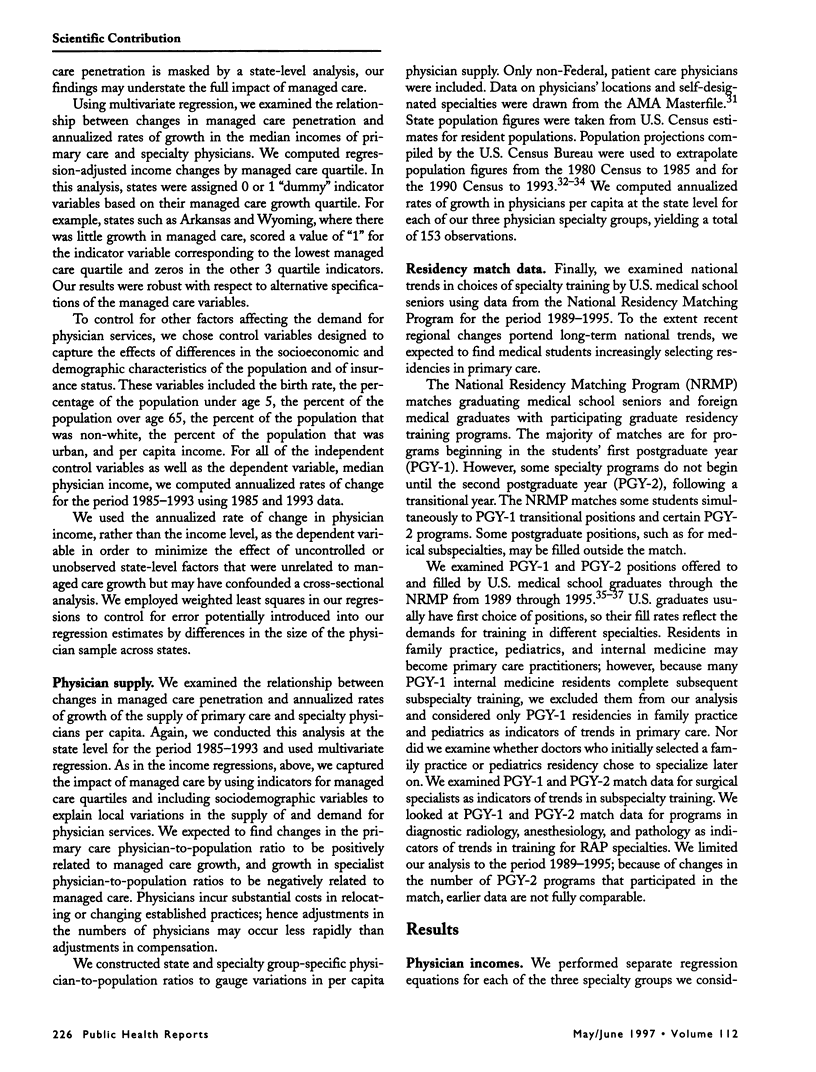
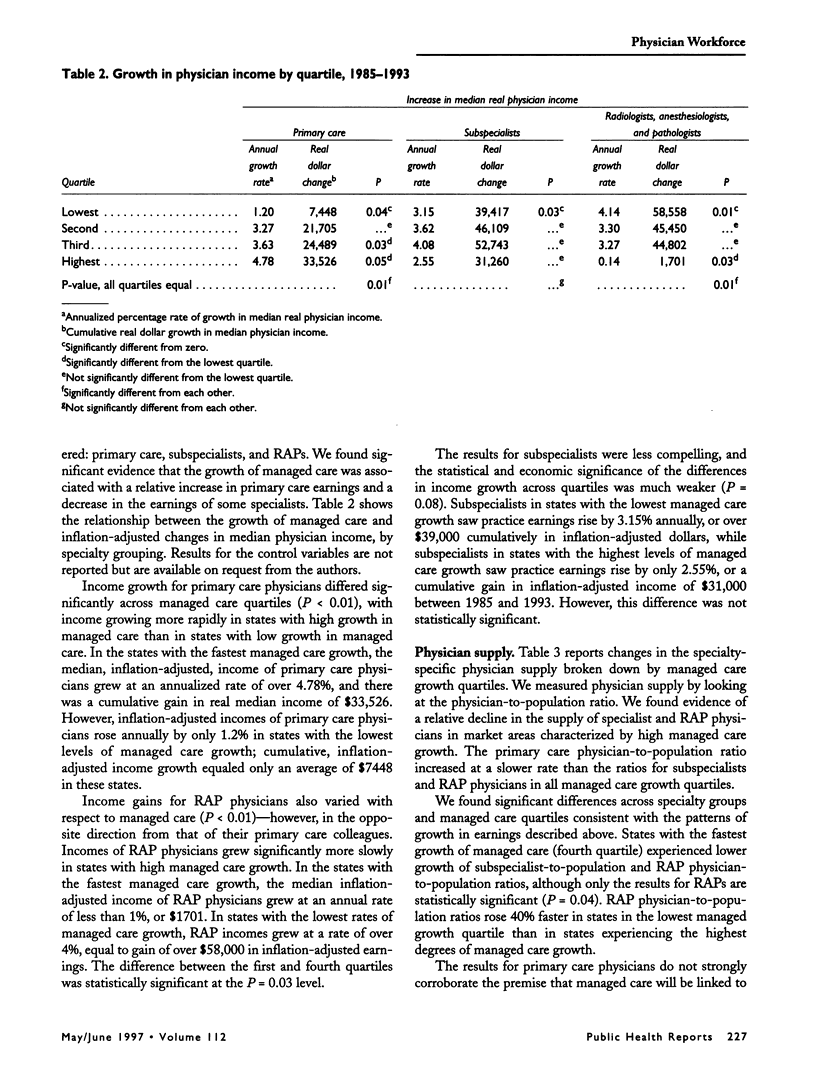
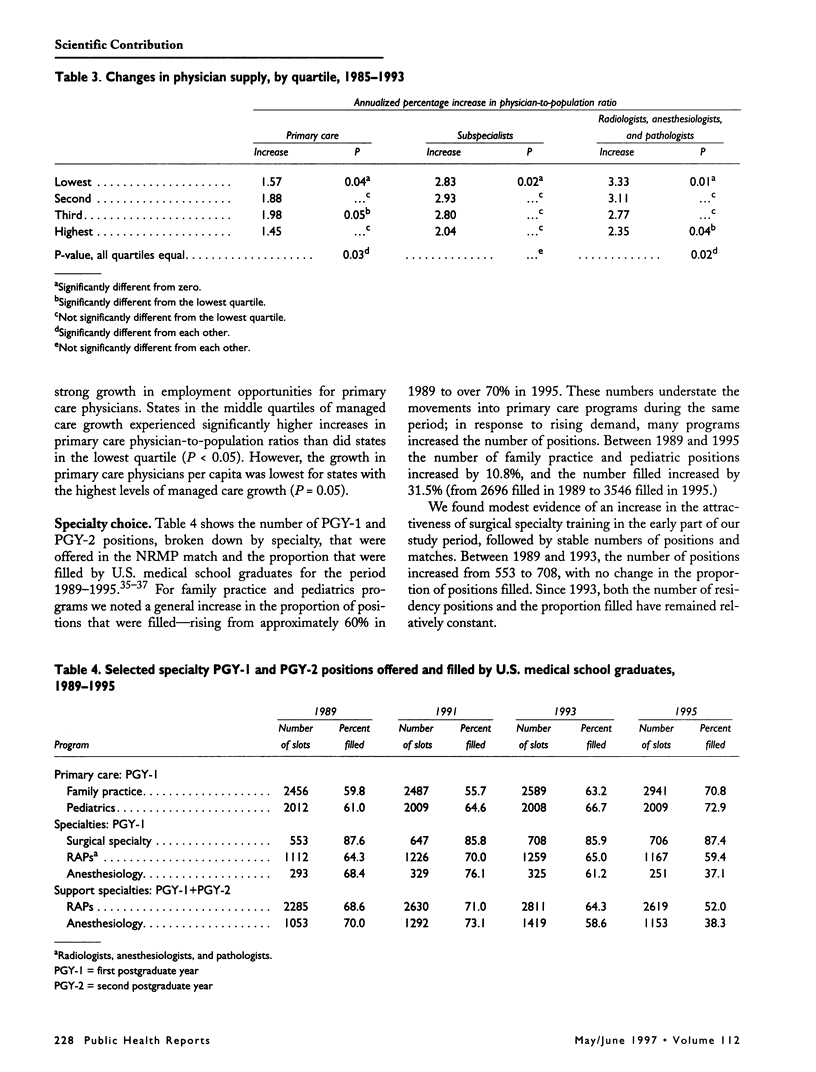
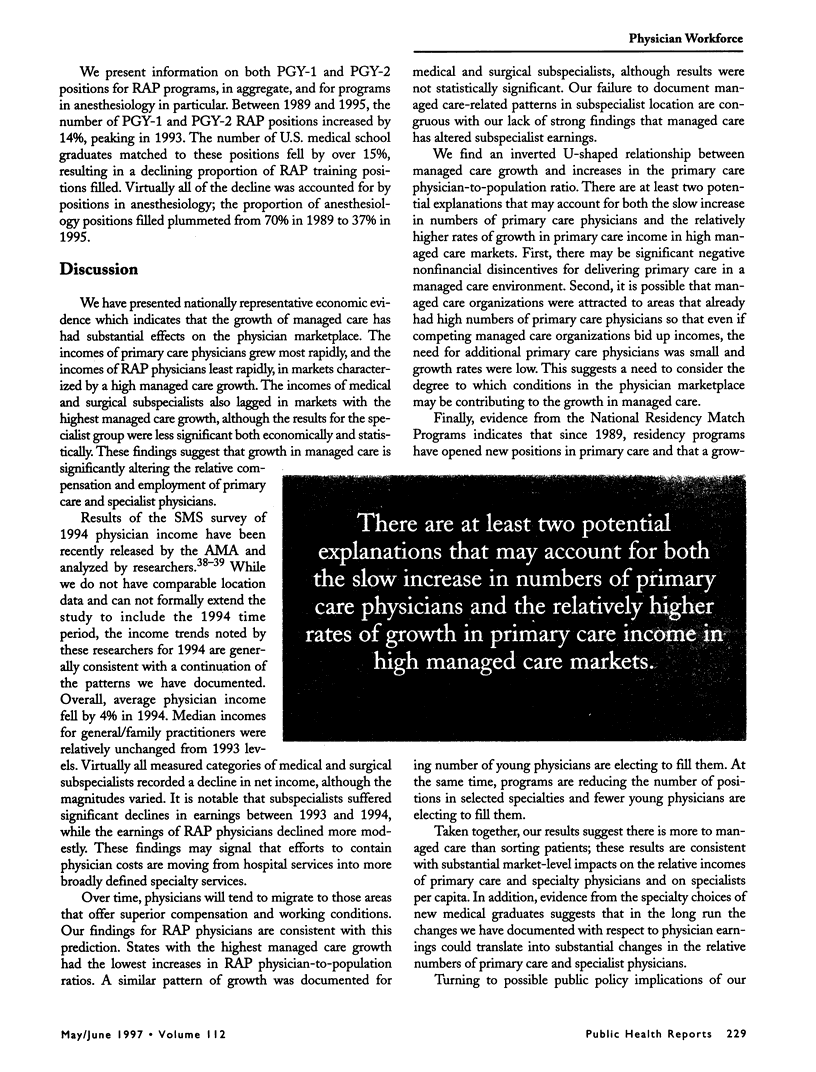
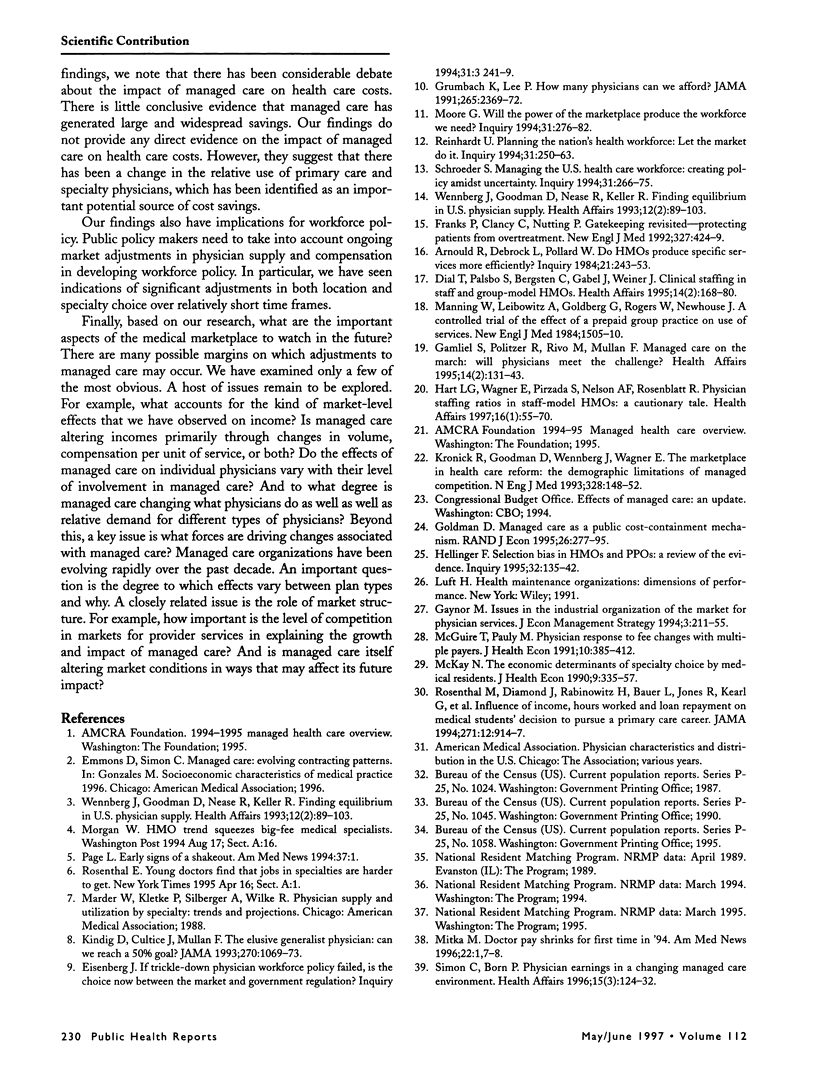
Selected References
These references are in PubMed. This may not be the complete list of references from this article.
- Arnould R. J., Debrock L. W., Pollard J. W. Do HMOs produce specific services more efficiently? Inquiry. 1984 Fall;21(3):243–253. [PubMed] [Google Scholar]
- Dial T. H., Palsbo S. E., Bergsten C., Gabel J. R., Weiner J. Clinical staffing in staff- and group-model HMOs. Health Aff (Millwood) 1995 Summer;14(2):168–180. doi: 10.1377/hlthaff.14.2.168. [DOI] [PubMed] [Google Scholar]
- Eisenberg J. M. If trickle-down physician workforce policy failed, is the choice now between the market and government regulation? Inquiry. 1994 Fall;31(3):241–249. [PubMed] [Google Scholar]
- Franks P., Clancy C. M., Nutting P. A. Gatekeeping revisited--protecting patients from overtreatment. N Engl J Med. 1992 Aug 6;327(6):424–429. doi: 10.1056/NEJM199208063270613. [DOI] [PubMed] [Google Scholar]
- Gamliel S., Politzer R. M., Rivo M. L., Mullan F. Managed care on the march: will physicians meet the challenge? Health Aff (Millwood) 1995 Summer;14(2):131–142. doi: 10.1377/hlthaff.14.2.131. [DOI] [PubMed] [Google Scholar]
- Grumbach K., Lee P. R. How many physicians can we afford? JAMA. 1991 May 8;265(18):2369–2372. [PubMed] [Google Scholar]
- Hart L. G., Wagner E., Pirzada S., Nelson A. F., Rosenblatt R. A. Physician staffing ratios in staff-model HMOs: a cautionary tale. Health Aff (Millwood) 1997 Jan-Feb;16(1):55–70. doi: 10.1377/hlthaff.16.1.55. [DOI] [PubMed] [Google Scholar]
- Hellinger F. J. Selection bias in HMOs and PPOs: a review of the evidence. Inquiry. 1995 Summer;32(2):135–142. [PubMed] [Google Scholar]
- Kindig D. A., Cultice J. M., Mullan F. The elusive generalist physician. Can we reach a 50% goal? JAMA. 1993 Sep 1;270(9):1069–1073. [PubMed] [Google Scholar]
- Kronick R., Goodman D. C., Wennberg J., Wagner E. The marketplace in health care reform. The demographic limitations of managed competition. N Engl J Med. 1993 Jan 14;328(2):148–152. doi: 10.1056/nejm199301143280225. [DOI] [PubMed] [Google Scholar]
- Manning W. G., Leibowitz A., Goldberg G. A., Rogers W. H., Newhouse J. P. A controlled trial of the effect of a prepaid group practice on use of services. N Engl J Med. 1984 Jun 7;310(23):1505–1510. doi: 10.1056/NEJM198406073102305. [DOI] [PubMed] [Google Scholar]
- McGuire T. G., Pauly M. V. Physician response to fee changes with multiple payers. J Health Econ. 1991;10(4):385–410. doi: 10.1016/0167-6296(91)90022-f. [DOI] [PubMed] [Google Scholar]
- McKay N. L. The economic determinants of specialty choice by medical residents. J Health Econ. 1990 Nov;9(3):335–357. doi: 10.1016/0167-6296(90)90050-d. [DOI] [PubMed] [Google Scholar]
- Moore G. T. Will the power of the marketplace produce the workforce we need? Inquiry. 1994 Fall;31(3):276–282. [PubMed] [Google Scholar]
- Reinhardt U. E. Planning the nation's health workforce: let the market in. Inquiry. 1994 Fall;31(3):250–263. [PubMed] [Google Scholar]
- Rosenthal M. P., Diamond J. J., Rabinowitz H. K., Bauer L. C., Jones R. L., Kearl G. W., Kelly R. B., Sheets K. J., Jaffe A., Jonas A. P. Influence of income, hours worked, and loan repayment on medical students' decision to pursue a primary care career. JAMA. 1994 Mar 23;271(12):914–917. [PubMed] [Google Scholar]
- Schroeder S. A. Managing the U.S. health care workforce: creating policy amidst uncertainty. Inquiry. 1994 Fall;31(3):266–275. [PubMed] [Google Scholar]
- Simon C. J., Born P. H. Physician earnings in a changing managed care environment. Health Aff (Millwood) 1996 Fall;15(3):124–133. doi: 10.1377/hlthaff.15.3.124. [DOI] [PubMed] [Google Scholar]
- Wennberg J. E., Goodman D. C., Nease R. F., Keller R. B. Finding equilibrium in U.S. physician supply. Health Aff (Millwood) 1993 Summer;12(2):89–103. doi: 10.1377/hlthaff.12.2.89. [DOI] [PubMed] [Google Scholar]
- Wennberg J. E., Goodman D. C., Nease R. F., Keller R. B. Finding equilibrium in U.S. physician supply. Health Aff (Millwood) 1993 Summer;12(2):89–103. doi: 10.1377/hlthaff.12.2.89. [DOI] [PubMed] [Google Scholar]


